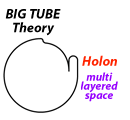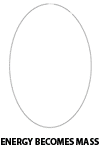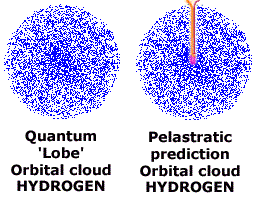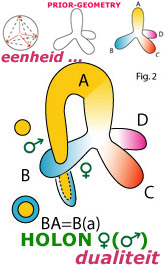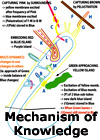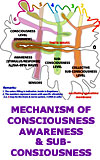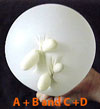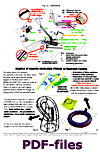|
|
|
PREDICTIONS
PREDICTION 1
I predict that the nuclei of atoms are connected with deeper layers of unbreakbale spacetime. The nuclei are holons containing specific balanced duality. Electrons are similar holons but with differently structured with spacetime layers.
When electrons orbit the nuclei they will be blocked to access zone(s) in which the connection tube(s) of the nucleus is located at that time. Therefor there will be a surface anomaly in the electron distribution, thus a non-spherical electron distribution where theoretically it should be full spherical (full distribution).The ideal test would be done with a hydrogen atom since it contains in it's simplest appearance only one electron. Intensive examination could confirm or void this prediction.
I refer to a publication in Nature related to tests done at the University of Arizona. Link to the nsf.com website.
Website on one of the researchers with link to photo's: http://clasdean.la.asu.edu/news/cuprite.htm
Images -- not computer simulations -- of dumbbell-shaped clouds of electrons shared between copper and oxygen atoms in cuprite (C2O) in a formation known in quantum mechanics as the s-dz2 orbital hybridization.
This image, obtained by ASU solid state scientists Jian-Min Zuo, Miyoung Kim, Michael O'Keefe and John Spence using electron and x-ray diffraction techniques, represents the first time the covalent bonds between atoms have ever been "seen" in cuprite. The nuclei of the copper atoms (not shown) are at the center of the blue and red shaded orbitals and those of the oxygen atoms (also not visible) are at the center and corners of the superimposed cube. The fuzzy pink clouds are less defined electron clouds representing covalent bonds between the copper atoms -- metal to metal bonding. In the second image (Cu202.tif), superimposed red circles represent the locations of oxygen nuclei.
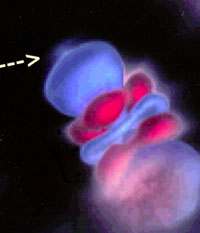 |
|
The copper atom shown on this (detail) photo has on top a very strange zone indicating some extra electron distribution. Why?
In our approach the 'connection tube' can be located there and the electron(s) will bounce there against the spacetime connection tube.
In below animated image this possibility is shown.
|
|
|
A pdf-file on the subject states: The non-spherical charge density around Cu+ can be interpreted as being due to the hybridization of d electrons with higher-energy unoccupied s and p states
|
Technic used: CBED is a microanalytical technique that uses a convergent or focused beam of electrons to obtain diffraction patterns from small specimen regions. CBED patterns consist of discs of intensity (rather than spots) which are rich in detail and can be exploited to reveal various aspects of specimen microstructure1,2. Spatial resolution is determined by the focussed incident probe size.
|
PREDICTION 2
I predict that the speed of light is limited by the stretchability of the membrane in our universal frame of reference (holon), and the propogation through the membrane medium.
The test to perform is by an emission device. I pedict that at the surface of such device during the start of the impuls the speed of the photon with be higher than 300,000 km/sec.
In the membrane approach everything is "made" or composed of entangled layers of membrane. So the speed of interactions is not a problem since the mediating surface is always present. Photons can only propagate depending of the frame of reference in which it acts. But gravity is always present - even faster than light - since "gravity" is the inherent property of the elastic membrane.
PREDICTION 3
I predict that the emission of energy rays during a black hole process is irregular.
On one side - matter side - there will be more gamma rays. On the other side - energy side - there will be more rays of other higher intensity, like of Dark Energy.
This is due to the topological direction of the Black hole decay. See the gravity page.
|
|
|
|
|
